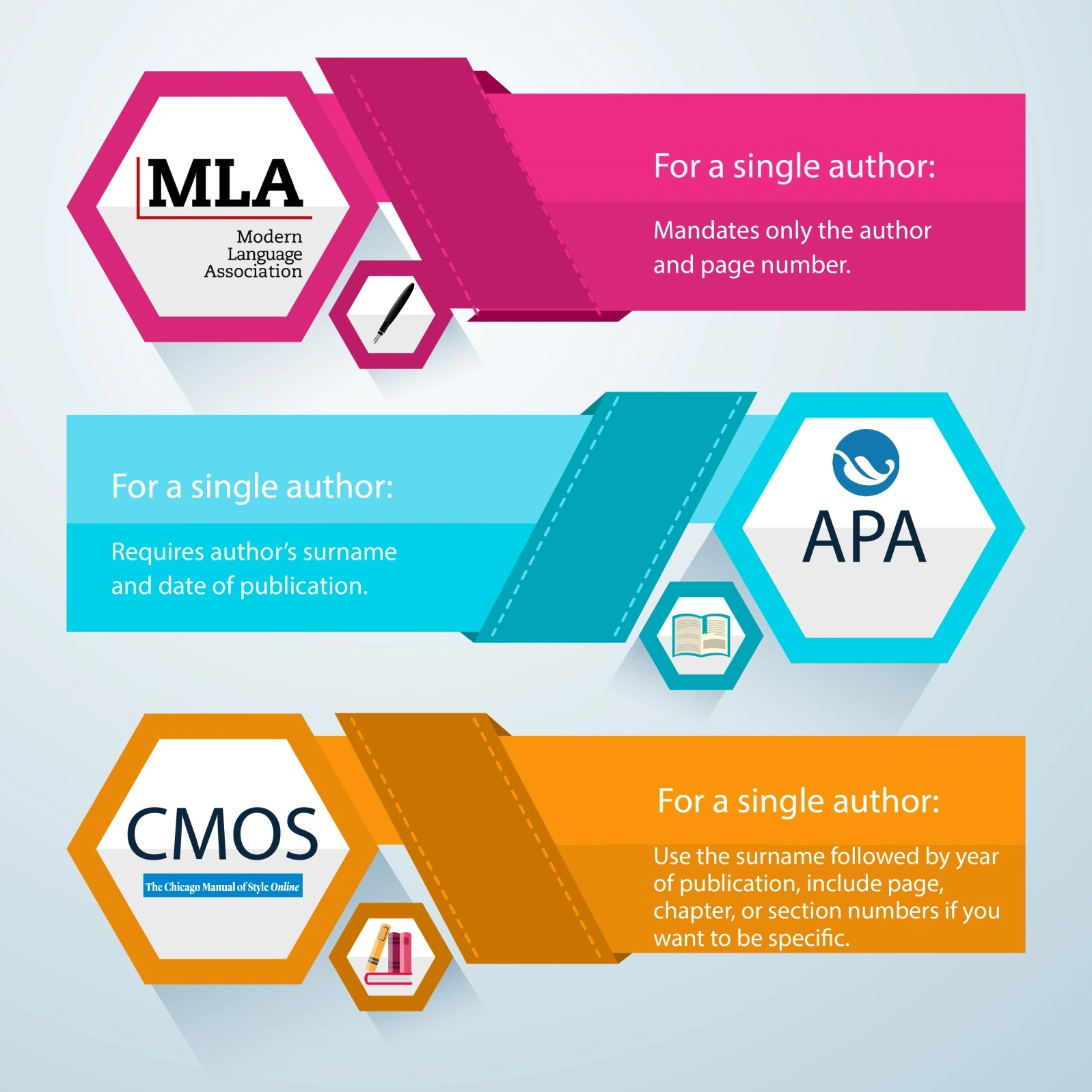Citing authors of printed books
A ready reckoner for academic writers.
You have created your bibliography but now you are in a quandary about citations; you have specific questions as to whether one has to cite all authors or just the first two authors. In this blog, PHD Assistance experts provide a reference table on how to cite references (printed books only) the right way particularly for one and more than one author.
The scope of this blog is limited to parenthetical citations (in-line or in-text citations) from printed books; hence, this article does not cover other nitty-gritties such as citing databases, images, newspapers, no known authors, online, etc.
CMS (or Chicago), APA, and MLA—these are the popular style manuals we particularly cover and show you how they vary when it comes to citations. Here is a quick snapshot of their usage for one, two, and more than two authors.
| Manual | Discipline | Number of authors | Examples |
| MLA style guide. | Humanities. | · For a single author: Mandates only the author and page number.
· Two authors: for two authors, list the authors’ last names in the text or in the parenthetical citation. · Three or more: Use “et al.” for citing the authors. |
· For a single author: It is proven that the drug delays the effects of cancer (Williamson, 102).
· Egg whites are high in protein (Watkins, et al. 221). · Two authors: The authors say that surface listening looks at what is “known, seen, and heard” (Greg and John 10). · Three or more: According to Watkins et al., Egg whites are high in protein (221). |
| APA style guide. | · Psychology
· Sciences · Education |
· For a single author: Requires author’s surname and date of publication.
· For two authors: Include both names and separate them with an ampersand. · For three, four, or five: Cite all of the authors at the first mention. Use “et al.” for subsequent reading. · If there are at least six authors, then you may use “et al” from the first mention. |
· For a single author: There was no indirect formal relationship noticed between the two reactions (Davidson, 1969).
· Davidson (1969) noted that “New research revealed that the two drugs had caused adverse reactions,” (p.119). · For two authors: Galvanizing to create confusion was their undertaking (Evans & Martha, 2011). · For the first citation: Vietnamese soldiers fought against the Americans (Wang, Nyugen, Xing, and Lee, 2018). · For additional citations: Vietnamese soldiers fought against the Americans (Wang et al. 2018).
|
| CMOS
(or Chicago) style guide. |
· Business
· History · Fine Art |
· For a single author: Use the surname followed by year of publication, include page, chapter, or section numbers if you want to be specific.
· For two or three authors: Cite all of them and separate them using “and”. · Four or more: Use “et al.” for 4 or more authors. · Also, you can have the option to use either “and others” or “et al”. |
· For a single author: A daily dose of caffeine was known to increase patients’ metabolism (Pascal 2000, 201-202).
· For two or three authors: Pascal and Wang (2000, 202). · Four or more: Vietnamese soldiers fought against the Americans (Wang et al. 2018, 23). · According to Wang et al. (2018), Vietnamese soldiers fought against the Americans (23). |

A citation is not required if common sense and ethics dictates so; for example, you do not need to cite common sayings and maxims or any common pool of information. Citing sources varies based on your readers and so if you are writing manuscripts for a scientific and academic paper then you need to cite your sources. Set the expectations on what involves common information.



